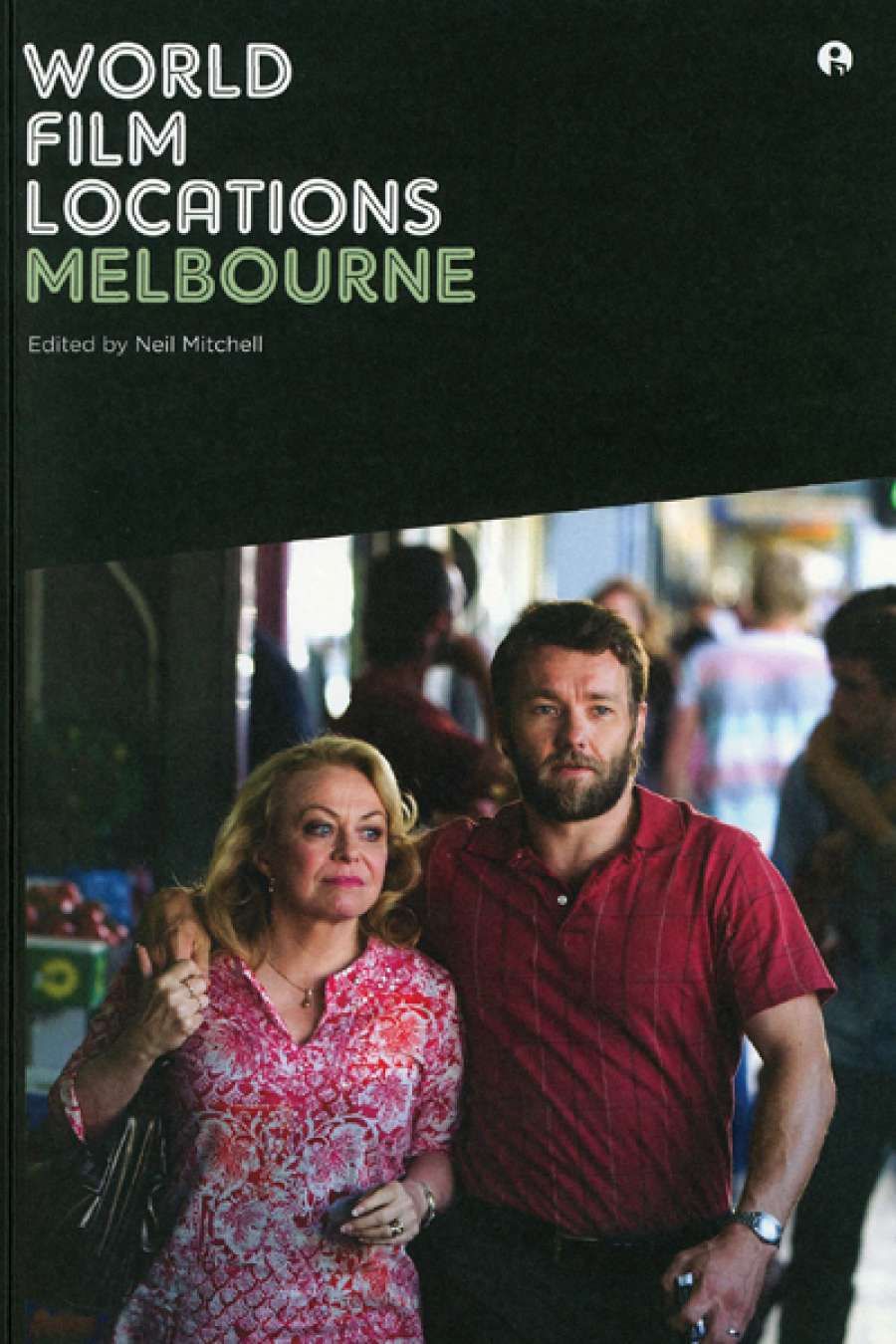
- Free Article: No
- Contents Category: Film
- Custom Article Title: Benjamin Millar reviews 'World Film Locations: Melbourne'
- Review Article: Yes
- Online Only: No
- Custom Highlight Text:
Reflections upon Melbourne’s reputation as a world cultural capital often sideline film-making, but the relationship is long and fruitful. The Story of the Kelly Gang (1906), filmed on the former Charterisville Estate in Heidelberg, is history’s first feature film. The first Australian entry in this series of global guides highlights the centrality of location to emotional spaces and film narrative. Melbourne-set films are defined by a ‘dispersed and piecemeal psycho-geography of the city’. The guide loosely groups forty-six films into six eras, providing snapshots of pivotal locations and scene-setting stills, from the dusty dystopian carnage of Mad Max (1979) to the subterranean blues of the brutal Romper Stomper (1992) opening sequence.
- Book 1 Title: World Film Locations: Melbourne
- Book 1 Biblio: Intellect Books (Footprint), $26.95 pb, 128 pp, 9781841506401
Chronological ordering provides a strong sense of the inexorable shift from films created in the city centre (His Royal Highness, 1932) through the middle suburbs (Squizzy Taylor, 1982) to the fringe (The Castle, 1997). Interspersed essays tease out the particular, yet draw attention to the relative flimsiness of the film snapshots. The guide makes sound use of apocryphal tales about Flinders Street Station being built according to plans intended for Mumbai and Ava Gardner’s walk down Williamstown pier in On the Beach (1959). But facing the challenge of illuminating both the location and the story arc, many entries slip frustratingly between the two.
With almost twenty contributors, the guide struggles to maintain a cogent, seamless, overarching voice. There are also surprising omissions, including The Big Steal, Mallboy, The Wog Boy, and Blessed. Despite Melbourne’s popularity as a stand-in location for shooting films ostensibly set elsewhere, overseas productions are all but ignored. A more nuanced consideration of each film, and a stronger indication as to how location was imperative to narrative and character, might have created of this promising premise an essential guide. Rather than a definitive treatise, this guide is an accessible springboard for further exploration.


Comments powered by CComment